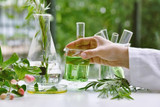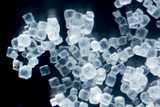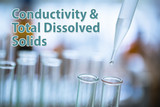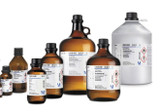Blog Post Archive
Fine Chemicals and Building Blocks: All The Finest Chemicals in One Place
Fine chemicals and synthesis building blocks are a chemically-diverse
collection of reagents, monomers, and heterocycles
used in research and development today. Compounds we provide include alkanes to aldehydes, ketones to
benzophenones, nitrogen, oxygen, sulfur and mixed heterocycle ring systems, over 3,000
benzene derivatives and di-substituted and tri-substituted synthesis heterocycles, and
special compound collections used in organic synthesis. We specialize in transition met
…
26th Aug 2022
What are Biochemicals?
Biochemical compounds make up the cells and other structures of organisms and carry out life processes. Most biochemical compounds are very large molecules called polymers, built of repeating units of smaller compounds called monomers. There are millions of different biochemical compounds but they all contain carbon, hydrogen, and oxygen. Most can be classified under four major classes: carbohydrates, lipids, proteins, and nucleic acids. We offer various biochemicals from adenine, cytosine
…
26th Aug 2022
Salts and Inorganic Compounds
Metal salts and inorganic compounds include pure elements and
solid metals in laboratory and commercial grades. We carry more than 1800 inorganic
chemical and elemental products.From Aluminum to Zirconium salts, we have every elemental salt covered, and pure elements too. To find the product you are looking for search above or Ask A Chemist
Aluminum
Beryllium
Calcium
Copper
Gadolinium
Iodine
Ammonium
Bismuth
Cerium
…
19th Aug 2022
Conductivity and Total Dissolved Solids
Conductivity of electricity (EC) in a liquid and water shows differences dependent on the chemicals and substances found in the solution, where solids, salts, and contaminants, increase the EC value, while pure and drinking water has a lower EC value.The EC value is measured in microSiemens (µS/cm) and readings generally fall between 30 µS/cm to 2000 µS/cm, for water of high quality while ocean water and brine will have a reading of approximately 40,000 µS/cm and greater. Higher values also sig
…
18th Aug 2022
Understanding Common Lab Solvents
Solvents are a class of chemicals defined by their function. Solvents are used to dissolve, suspend or extract other materials without chemically changing the components.
There are more than 1000 solvent varieties used in research, spectroscopy, analytical chemistry and manufacturing industries. They come in Research, Technical, USP, HPLC, LCMS, ACS Reagent, ASTM Types 1-IV, NIST Traceable, and Spectral grades, as well as molecular biology grades and pre-made mixtures as DNAse-free solut
…
18th Aug 2022





